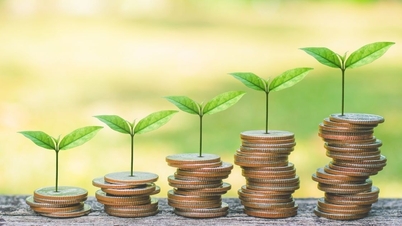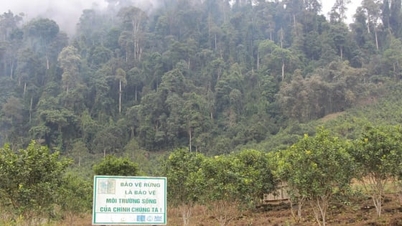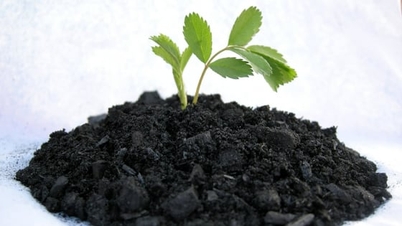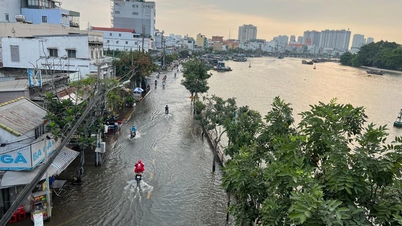PV: Sir, carbon credit creation is considered a relatively new concept, not only in Nghe An but also nationwide. Could you share some basic information on this topic?
Mr. Phung Thanh Vinh: Carbon credits are a valuable resource for future agricultural production, but they remain untapped.
The Prime Minister's approval of the project to reduce emissions on 1 million hectares of rice in the Mekong Delta is one of the first steps in implementing this initiative in Vietnam. This is considered a model for reduced-emission rice production, with Vietnam being the first country in the world to implement it, addressing the challenges of climate change and food security. If successful, it will attract the attention and support of international partners in terms of financial resources and science and technology for development and replication. We will also sell carbon credits through the production of high-quality rice, reducing production costs, increasing profits, and enhancing the professionalism of farmers.

Achieving carbon certification will enhance the brand and value of Vietnamese rice in the global market. Production will both meet food security needs and adapt to climate change.
According to the Ministry of Agriculture and Rural Development, through working with the World Bank, it is possible that in 2024, carbon credits can be paid for rice cultivation areas implementing the VnSAT program to ensure reduced greenhouse gas emissions. Currently, the Ministry of Natural Resources and Environment is also promoting the early launch of the Vietnamese carbon credit market next year and may officially participate in the global carbon credit exchange in the following years.
PV: Rice production is a crucial industry, however, current production methods still have many shortcomings and potential problems. What issues will the effort to create carbon credits in rice production address, sir?
Mr. Phung Thanh Vinh: With over 180,000 hectares of rice cultivation, Nghe An province produces approximately 1.1 million tons of food per year, ensuring not only food security but also a surplus, providing income for farmers.
However, agricultural production also contributes to the generation of greenhouse gases, accelerating global warming, with rice production accounting for more than 50% of greenhouse gas emissions.

The cause of this situation is due to outdated production practices, including the indiscriminate and unscientific use of water, fertilizers, and pesticides. With the flood irrigation method, water is continuously maintained in the fields from before transplanting until about two weeks after flowering; this wastes irrigation water and pumping labor, and also emits a large amount of methane (CH4), significantly contributing to the greenhouse effect.
Reducing methane emissions is closely linked to water management techniques in rice paddies, specifically the alternating wet-dry irrigation technique, also known as "agricultural drying," which not only reduces water usage but also helps increase farmers' income. The reduction in methane emissions through this technique forms the basis for issuing carbon credits, thereby directly benefiting farmers through the number of credits they earn.
This irrigation method has been researched and applied in many places around the world, including Vietnam, helping to save 20-50% of water, labor, and irrigation costs while rice plants still grow well. It also significantly reduces methane emissions by 20-48%, mitigating the greenhouse effect and climate change. By adhering to proper technical measures and implementing carbon credit generation in rice production, farmers have the opportunity to increase their income through selling carbon credits while making a significant contribution to mitigating climate change and conserving water resources.

PV: So, what is Nghe An's approach to this issue, sir?
Mr. Phung Thanh Vinh: At the 26th Conference of Parties to the United Nations Framework Convention on Climate Change (COP26), Vietnam made a strong commitment to the international community to bring net emissions to "zero" by 2050. The Prime Minister has issued many strategies on climate change, green growth, sustainable agriculture and rural development… Further detailed regulations on greenhouse gas emission reduction, ozone layer protection, and the concretization of the carbon credit market will continue. A carbon credit exchange will be established and is expected to conduct trials from 2025. The Ministry of Agriculture and Rural Development also encourages the application of water-saving irrigation methods, such as alternating wetting and drying to reduce irrigation water and greenhouse gas emissions.
With a rice production area of 180,000 hectares per year, Nghe An has great potential for reducing emissions, potentially by 1.44 million t-CO2e. A collaborative project to issue carbon credits in rice production began its pilot implementation in the spring of 2024. In the first season, the project is expected to cover nearly 6,000 hectares of rice in the districts of Nam Dan, Nghi Loc, Hung Nguyen, Do Luong, Dien Chau, etc., within the irrigation areas of the Northern and Southern Irrigation Systems, with approximately 24,000 households participating.

This is the first project of its kind in Nghe An province, and indeed in Vietnam, to generate carbon credits from rice cultivation. With support from JICA, it enjoys favorable conditions for implementation. Technical and infrastructure-related issues will be addressed in stages throughout the project. The project aligns with the UN's Sustainable Development Goals, making a positive contribution to mitigating climate change and conserving water resources; it is being implemented through consultation with a unit introduced by JICA Vietnam.
To produce rice in a way that meets carbon credit requirements, many criteria and requirements must be met, from organizing and adhering to the production season to implementing appropriate farming practices. To date, Nghe An province has implemented many smart farming methods, such as applying the System of Intensification (SRI) model, covering an area of 10,000-12,000 hectares per production season. This is considered a favorable foundation for applying the carbon credit generation process in rice production. It is expected that after success with rice, it will be expanded to other crops with large areas and potential, such as corn, sugarcane, tea, and cattle farming.

However, this is a very new direction, and even the management agencies and local authorities are not yet fully aware of it, let alone the farmers. Therefore, strengthening propaganda and dissemination efforts is the first priority. At the same time, the government and specialized agencies must truly coordinate, plan the region, and based on that, develop standardized production processes to guide implementation, creating pressure to organize production to meet the requirements.
Interviewer: Thank you, sir!
Source






![[Photo] Prime Minister Pham Minh Chinh attends the Conference on the Implementation of Tasks for 2026 of the Industry and Trade Sector](/_next/image?url=https%3A%2F%2Fvphoto.vietnam.vn%2Fthumb%2F1200x675%2Fvietnam%2Fresource%2FIMAGE%2F2025%2F12%2F19%2F1766159500458_ndo_br_shared31-jpg.webp&w=3840&q=75)










































































































Comment (0)